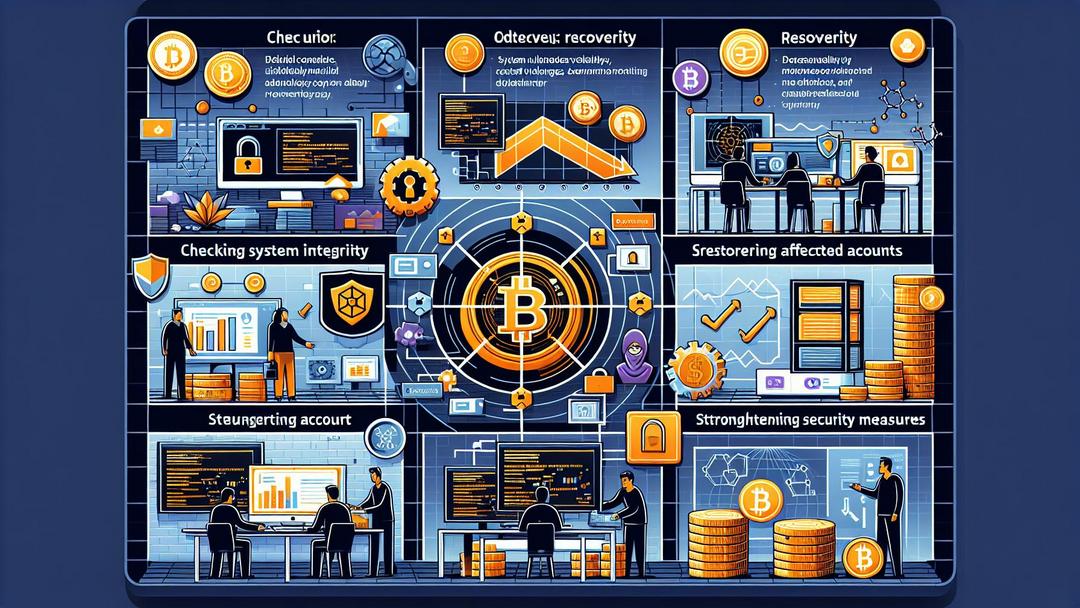Table of Contents
Balancer hack recovery leads DeFi news as the protocol confirms initial on chain returns following the Balancer protocol $128 million hack. Independent validation is underway.
Balancer and external investigators are reconciling returned assets, documenting provenance, and preparing a claims framework for affected users.
Partners across analytics, exchanges, and auditing firms are coordinating containment and restitution while the team finalizes next steps.
Balancer Hack Recovery: What You Need to Know
- Balancer hack recovery is advancing with verified returns, third party validation, and a forthcoming claims portal for eligible users.
Recovery Status and Next Steps
Restitution has begun as on-chain returns are verified and secured for distribution. The Balancer hack recovery includes formal asset reconciliation, followed by a user-centric claims process that will outline eligibility, snapshots, and timelines.
The protocol is coordinating with investigators, auditors, and partners to ensure that returned funds are authentic, trackable, and safely custodied before any allocation.
Protect your crypto and accounts today
1Password Password manager with phishing resistant passkeys and secure vaults.
Bitdefender Protection against malware, phishing, and crypto stealers.
IDrive Encrypted cloud backup for wallets, seed phrase exports, and critical files.
What Happened and Why It Matters
The Balancer hack recovery follows a large theft that disrupted market confidence across decentralized finance. Early asset returns show that some stolen funds can be traced, negotiated, and retrieved on-chain.
The Chainalysis Crypto Crime Report notes that blockchain transparency often enables partial clawbacks when exchanges, analytics firms, and community researchers apply pressure.
SecurityWeek reporting confirmed that recoveries had started and would be validated before distribution. This approach aligns with best practice after major exploits. Teams confirm receipts, secure assets, and communicate a clear restitution framework. The Balancer hack recovery reflects a maturing DeFi incident response model.
How Funds Are Typically Recovered in DeFi
Each breach is unique, but the Balancer hack recovery likely blends on-chain analysis with off-chain coordination. Common steps include:
- Tracing flows with blockchain analytics and tagging addresses to increase visibility and pressure.
- Negotiating with attackers or intermediaries to encourage returns using predefined safe return addresses.
- Working with exchanges and bridges to flag or freeze suspicious inflows and disrupt laundering.
- Engaging third party reviewers to authenticate assets, document timelines, and prepare distribution plans.
For users, strengthen fundamentals. Improve password hygiene, prefer hardware wallets, and apply strong encryption practices. See this guide on how encryption improves crypto security.
What Impacted Users Should Do Now
While the Balancer hack recovery proceeds, reduce exposure and prepare for claims:
- Revoke unnecessary token approvals on wallets linked to affected pools.
- Migrate exposure from compromised contracts based on official guidance.
- Monitor for the official claims portal announcement and snapshot dates.
- Ignore phishing domains that advertise instant refunds or accelerated claims.
- Enable passkeys or use a trusted password manager on related accounts.
These actions mirror recent Web3 incidents, including the Radiant Capital hack and widespread wallet drainer malware campaigns.
Context: A Tough Year for DeFi
The Balancer hack recovery unfolds during a turbulent period for decentralized finance. Complex smart contract flaws, front end compromises, and social engineering defined the DeFi security breach 2024 pattern.
Attackers pushed volume through mixers and cross-chain bridges, while established protocols invested in audits, bug bounties, and tabletop response drills to harden defenses.
To rebuild trust, teams are doubling down on multisig treasury controls, staged upgrades, and battle tested libraries. Developers can consult OpenZeppelin’s security guidance, and users should verify transactions on Etherscan before signing.
Implications for DeFi and Investors
The Balancer hack recovery shows that transparency, analytics, and cross-sector cooperation can deliver measurable results after significant thefts.
Successful returns can reduce user losses, preserve liquidity, and set a stronger precedent for responsible incident handling. This case may influence how future protocols structure response teams, disclosure, and asset custody during crises.
Tradeoffs remain. Recoveries are often partial and time-consuming, and victims must wait for snapshots and claims windows. Legal and jurisdictional hurdles can slow negotiations.
Adversaries also learn from every breach, which pushes protocols to elevate defense in depth, monitoring, and anomaly detection to outpace evolving tactics.
Level up your security stack
Tresorit End to end encrypted cloud storage for sensitive documents and keys.
Tenable Visibility and risk based vulnerability management for critical systems.
Optery Remove exposed personal data from people search sites to reduce targeted attacks.
Conclusion
The Balancer hack recovery demonstrates how coordinated response and on-chain transparency can convert partial losses into verified returns. It also shows the value of sustained pressure through analytics and exchange cooperation.
Users should rely on official updates, prepare documentation for claims, and avoid opportunistic phishing. Verification and patience will improve outcomes.
The Balancer protocol $128 million hack will remain a reference case for DeFi crisis response. Continued collaboration, audits, and resilient design can strengthen the ecosystem.
Questions Worth Answering
How will recovered funds be distributed?
The team plans a formal claims portal with snapshots, eligibility criteria, and timelines. Follow official channels for rules and dates.
What should users do to stay safe during recovery?
Revoke risky approvals, verify URLs, use a reputable password manager, and trust only official announcements. Avoid unverified claims sites.
Can protocols retrieve stolen assets?
Yes, sometimes. The Balancer hack recovery shows that analytics pressure, negotiations, and flagged addresses can lead to partial returns.
What signals should users watch?
Official statements, on chain confirmation of returned funds, snapshot blocks, and the launch of a verified claims portal.
How are laundering routes disrupted?
By tagging addresses, alerting exchanges and bridges, and freezing or flagging suspicious inflows to limit cash-out options.
Where can I verify transactions?
Use explorers like Etherscan to inspect addresses and transactions before signing.
About Balancer
Balancer is a decentralized finance protocol known for customizable automated portfolio pools that enable trading and liquidity with flexible fees.
Its architecture supports programmable market making, which lets projects tailor liquidity to token requirements across DeFi integrations.
Governance is community driven through BAL holders. The project emphasizes security reviews, open source collaboration, and iterative improvements.





